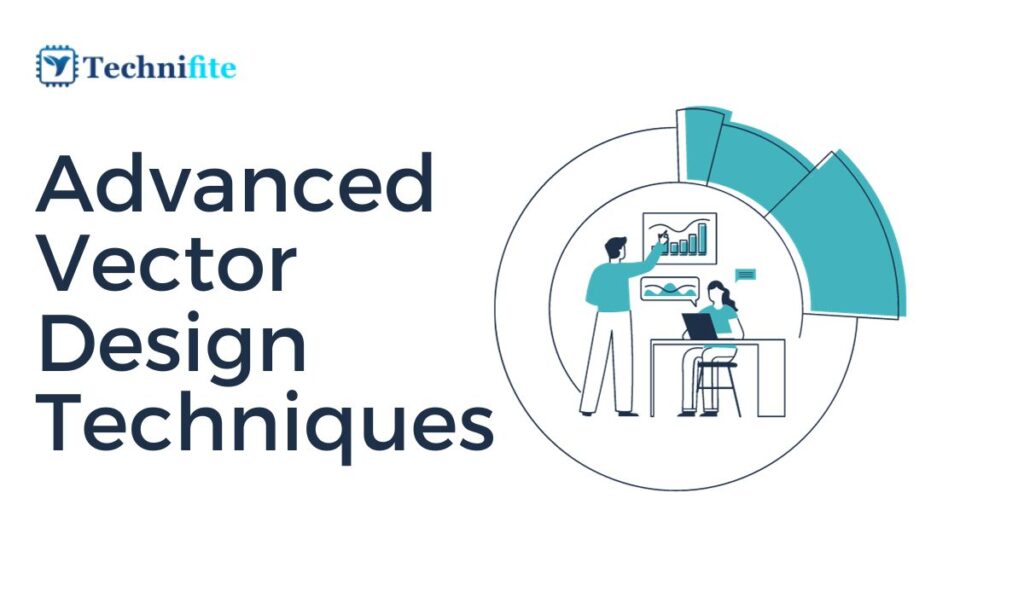Advanced Vector Design Techniques: In the dynamic world of digital design, mastering advanced vector techniques can significantly elevate your creations. While basic skills provide a foundation, understanding the intricacies of vector design opens up possibilities for intricate, professional-grade artworks. This comprehensive guide will take you on a deep dive into advanced vector design techniques, empowering you to create visually stunning and complex illustrations.
1. Mastering Bezier Curves and Handles
At the heart of vector design lies the Bezier curve, a mathematical concept that defines smooth curves in digital art. Understanding how to manipulate Bezier handles enables precise control over curves and shapes. Mastering the art of Bezier curves involves learning to balance handles, creating seamless curves, and refining anchor points. Practice is key; experimenting with different shapes and curves will hone your skills and provide a nuanced understanding of this fundamental vector tool.
2. Harnessing the Power of Pathfinder Tools
Pathfinder tools are indispensable features in vector design software that allow you to create complex shapes by combining or subtracting basic ones. Understanding operations such as Unite, Minus Front, Intersect, and Exclude can transform basic shapes into intricate, multifaceted designs. Experiment with combining different shapes and using various Pathfinder operations to discover unique patterns, logos, and illustrations.
3. Grasping Clipping Masks and Opacity Masks
Clipping and opacity masks are powerful tools for controlling the visibility of objects in vector designs. Clipping masks allow you to reveal specific parts of an object, while opacity masks control the transparency of elements. Mastering these techniques opens the door to creating intricate patterns, surreal compositions, and captivating visual effects. Understanding the nuances between the two masks and experimenting with gradients and textures can result in visually compelling designs.
4. Advanced Color Blending and Gradient Meshes
While basic colour gradients are useful, mastering advanced colour blending and gradient meshes takes your vector designs to a new level. Gradient meshes enable you to create intricate, multi-colour blends that mimic realistic lighting and shading. Understanding how to place mesh points, adjust colour transitions, and manipulate gradients gives your illustrations depth and dimensionality. Experiment with different mesh configurations to achieve various effects, from lifelike textures to vibrant, surreal colour blends.
5. Custom Brushes and Pattern Creation
Creating custom brushes and patterns adds a personal touch to your vector designs. Whether you’re crafting intricate borders, realistic fur textures, or unique typography, custom brushes are invaluable. Vector design software often allows you to create brushes from shapes or lines, giving you endless possibilities for creative exploration. Additionally, mastering pattern creation lets you design seamless, repeating motifs for backgrounds, textiles, or digital artwork. Experiment with brush shapes, sizes, and patterns to develop a signature style that separates your designs.
6. Precision with Alignments and Distribute Tools
Attention to detail is paramount in vector design; precise alignments can make or break your artwork. Advanced alignment and distribution tools in vector software enable you to distribute objects evenly, align them to specific points or paths, and create perfectly symmetrical designs. Understanding how to use these tools ensures a polished, professional finish to your creations. Grids, guides, and smart snapping features further enhance your ability to achieve pixel-perfect precision.
7. Mastering 3D Effects and Perspective Tools
Adding a three-dimensional aspect to your vector designs creates depth and realism. 3D effects and perspective tools allow you to transform 2D shapes into dynamic, multidimensional objects. Understanding how to apply bevels, extrusions, and revolve effects adds depth to your designs, making them visually engaging. Perspective tools enable you to create realistic scenes and objects by adjusting angles and vanishing points, providing a sense of depth and spatial realism to your artwork.
8. Animation and Interactivity
Advancements in vector design have opened avenues for creating animated and interactive content. Understanding how to animate vector objects, whether for web graphics or multimedia presentations, adds a dynamic dimension to your designs. Tools for creating interactive elements, such as buttons and hyperlinks, enhance user engagement in digital interfaces. Mastering animation and interactivity transforms static vector designs into dynamic, captivating user experiences.
Conclusion: Elevate Your Vector Design Skills
Mastering these advanced vector design techniques empowers you to push the boundaries of your creativity. You can transform basic shapes into intricate masterpieces through continuous practice, experimentation, and a willingness to explore new possibilities. As you delve deeper into these techniques, remember that creativity knows no bounds; every tool and feature in your vector design software is a potential asset waiting to be harnessed. Embrace the challenge, refine your skills, and let your imagination soar as you venture into advanced vector design. With dedication and passion, you can create vector artwork that captivates, inspires, and leaves a lasting impression on viewers worldwide.
Frequently Asked Questions (FAQs)
What are some common applications of advanced vector design techniques in real-world projects?
Advanced vector design techniques find applications in various creative projects, including logo design, web graphics, advertising materials, product packaging, digital illustrations, and multimedia presentations. These techniques enable designers to create intricate patterns, lifelike textures, and dynamic visual effects, enhancing the overall visual appeal of the final product.
Do I need expensive software to practice advanced vector design techniques?
While professional-grade vector design software like Adobe Illustrator offers a wide range of advanced features, free and more affordable alternatives such as Inkscape and Gravit Designer are available. These programs provide a robust set of tools for practising advanced vector design techniques, making it accessible to beginners and those on a budget.
How long does it take to master advanced vector design techniques?
The time it takes to master advanced vector design techniques varies based on individual learning pace, prior experience, and the complexity of the learned techniques. With consistent practice, dedication, and a willingness to experiment, beginners can become proficient in a few months. However, continuous learning and exploration are essential to refining these skills over time.
Can advanced vector design techniques be used for print media and digital platforms?
Absolutely. Advanced vector design techniques are versatile and can be used for print and digital media. Vector graphics are resolution-independent, making them ideal for high-quality print materials such as brochures, posters, and banners. Simultaneously, these techniques enhance the visual appeal of digital platforms, including websites, social media graphics, and interactive multimedia presentations.
Are there online resources or tutorials available for learning advanced vector design techniques?
Yes, a wealth of online resources and tutorials are dedicated to advanced vector design techniques. Platforms like YouTube, Adobe Creative Cloud tutorials, and design-focused websites offer step-by-step guides, video tutorials, and practice exercises. Additionally, online communities and forums provide opportunities to connect with fellow designers, share knowledge, and seek advice, creating a supportive learning environment for aspiring vector artists.


